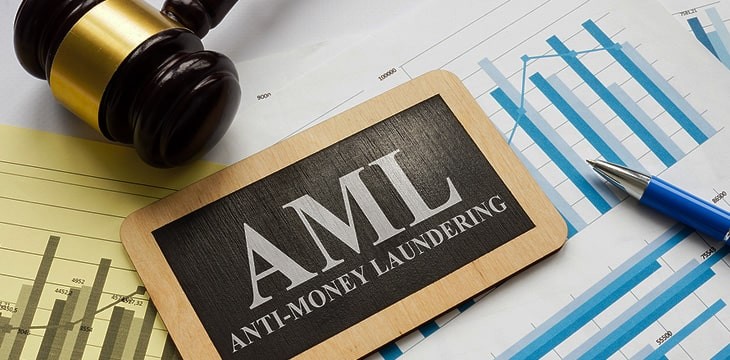Money laundering remains a significant issue in the Australian economy, as illicit transactions severely threaten its financial system and economic structure. According to a report, financial losses from money laundering in Australia rose from $2.59 billion in 1995 to $9.72 billion in 2009.
To rectify these evolving threats and challenges, the Australian economy must intensify the functionality of its law enforcement agencies and financial intelligence units to evaluate money laundering threats. The development of a risk assessment framework by the Australian Transaction Reports and Analysis Centre (AUSTRAC) helps fight money laundering in Australia.
This comprehensive guide provides detailed insights into the money laundering challenges faced by the Australian economy and the role of regulatory obligations in overcoming these instances.
Impact of Money Laundering in Australia – A Brief Overview
Due to its stable economic system, Australia serves as a major hub for the world’s illegally acquired funds. Money laundering in Australia is usually conducted through domestic financial channels, through which a significant amount of illicit proceeds are generated. The Australian financial system is manipulated as the imposters introduce illicit funds by placing, layering, and integrating illegal sums.
In Australia, the increasing number of digital financial operations has complicated transaction reporting accuracy, disrupting the identification of malicious fund transactions. Therefore, financial institutions must adhere to the Australian AML checks to identify and combat such challenges.
Characteristics of the Australian Money Laundering Framework
Money laundering in Australia is highly persistent as this ecosystem offers several alternate solutions for imposters to rotate illicit funds across the financial system. Additionally, the widespread use of digital banking servers tarnishes the detection of financial transactions within the country and across international borders.
Digital banking enables criminals to conceal their identities and transaction activities, leading to increasing money laundering instances. The Australian financial system is linked with the international criminal markets, which stimulates the laundering of funds through multiple channels.
AML Laws in Australia – Investigate the Regulatory Framework
AML requirements in Australia stress compliance with the regulations developed by AUSTRAC, as it is responsible for regulating more than 15,000 Australian businesses and individuals. The most effective regulatory bodies and frameworks to combat money laundering in Australia are examined below:
AML and CFT Act 2006
The anti-money laundering and counter-terrorism financing framework mandates that the Australian financial system must conduct customer due diligence operations and report malicious activities to the Suspicious Activity Reporting (SAR) department while maintaining the records in official databases.
Financial Transaction Report Framework 1988
This framework necessitates the reporting of unusually large monetary transactions and foreign remittances to track the financial patterns. Under this act, the imposters are subjected to severe penalties in case of the identification of illegal activities.
Australian Financial Services (AFS) Framework
The ultimate aim of these regulations is to instruct Australian financial institutions to obtain an AFS license. This license requires this sector to adhere to the CFT/AML guidelines, ensuring a risk-free financial environment for legitimate entities.
Money Laundering Threats in Australia – Identify the Challenges
In the context of the Australian financial framework, AUSTRAC has categorized several threats in terms of the level of risk they pose. Some of the most prominent threats to Australia’s financial systems are discussed below:
-
Illicit Drug Market: This market is estimated to pose the highest money laundering threat. Additionally, this market is widely used for structuring illicit funds and money mules, making it vulnerable to illegal transaction activities.
-
Government-Funded Program Scams: Money laundering in Australia is extensively conducted through fraud against commonwealth-beneficial processes. The money launderers conduct child care fraud, medicare scams, and family day care scams to obtain funds illicitly.
AML Regulations in Australia – 6 Key Regulatory Obligations
Australia AML checks encompass six regulatory obligations to regulate its financial structure. These are:
-
Financial institutions, whether in-person or digital, are required to abide by the AUSTRAC rules to prevent imposters and their associates from conducting illegal transactions.
-
The development of AML and CFT programs is necessary to regulate financial operations while combating money laundering practices.
-
An extensive customer due diligence program must be initiated to identify an entity’s financial relations and risk profiles.
-
Financial institutions are obligated to perform ongoing transaction monitoring to regulate the financial environment and economic stability.
-
All transactional activities and suspicious concerns must be reported to AUSTRAC, which ensures an extensive analysis of all the transaction activities in real-time.
-
Finally, the financial activities must be retained in an authorized database for future investigation.
Concluding Remarks
The Australian economy is the central hub of illicit financial operations. Money laundering in Australia is disrupting its financial framework, making it vulnerable to illegal transactional activities. The identification and elimination of such illegal practices require financial institutions to comply with AUSTRAC regulations.
This framework stresses the adherence to the anti-money laundering and counter-terrorism financing modules. Additionally, the comprehension of customer’s identities must be undertaken through extensive customer due diligence and AML reporting programs.

